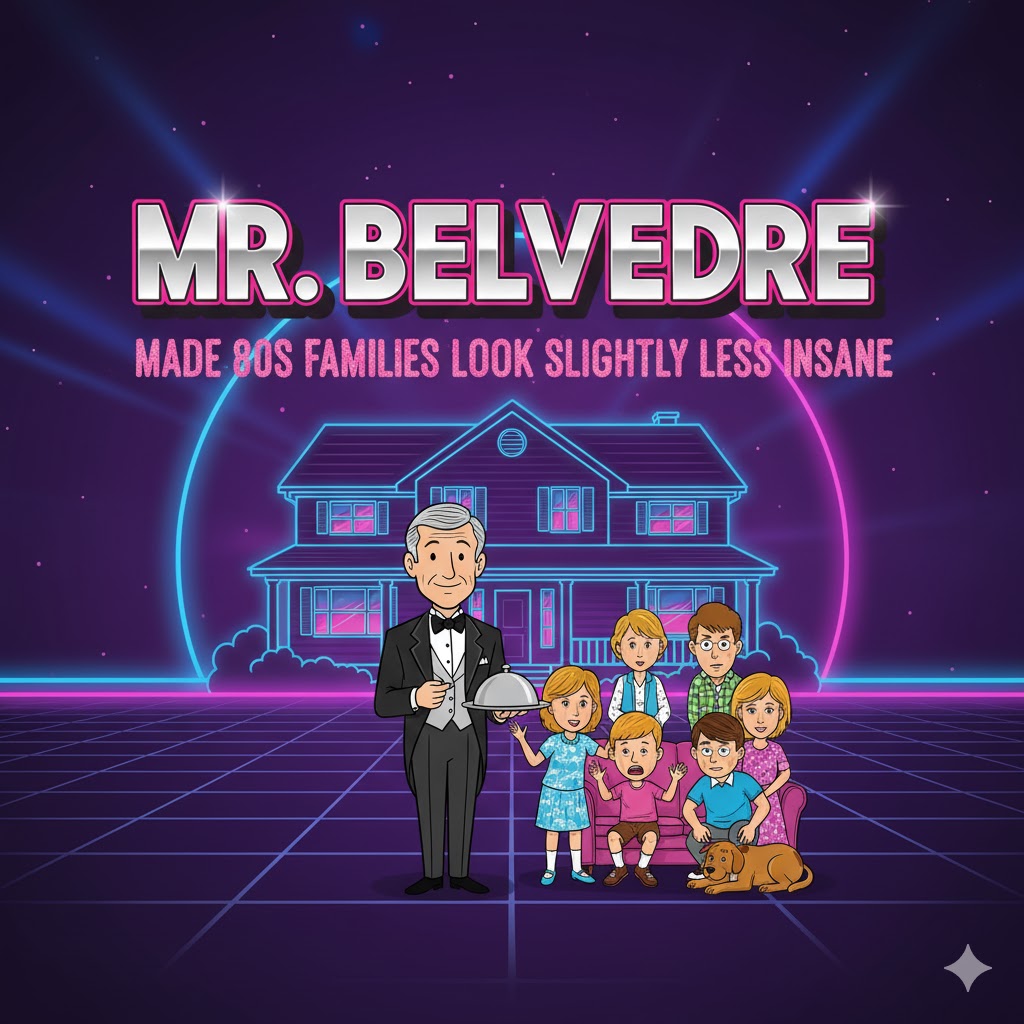 In the noisy, neon-soaked media landscape of the 1980s, one figure stood out as both a satire and a symbol of the times—a stuttering, sarcastic, computer-generated talking head named Max Headroom. With his pixelated smirk, exaggerated mannerisms, and glitchy speech, Max was more than just a strange TV character. He was a glimpse into a future that was just beginning to take shape—one driven by corporate media, artificial personalities, and a digital identity crisis. Max Headroom wasn’t just ahead of his time—he was about time. And in many ways, he remains one of the most prophetic pop culture inventions of the 20th century.
In the noisy, neon-soaked media landscape of the 1980s, one figure stood out as both a satire and a symbol of the times—a stuttering, sarcastic, computer-generated talking head named Max Headroom. With his pixelated smirk, exaggerated mannerisms, and glitchy speech, Max was more than just a strange TV character. He was a glimpse into a future that was just beginning to take shape—one driven by corporate media, artificial personalities, and a digital identity crisis. Max Headroom wasn’t just ahead of his time—he was about time. And in many ways, he remains one of the most prophetic pop culture inventions of the 20th century.
Max Headroom first appeared in 1985 in a British made-for-TV film titled Max Headroom: 20 Minutes into the Future, a dystopian sci-fi satire that introduced viewers to a cynical near-future dominated by powerful television networks and endless advertising. The film told the story of Edison Carter, a crusading investigative journalist working for Network 23, a massive TV corporation with more interest in ratings than truth. After stumbling upon a dark corporate conspiracy involving dangerous “blipverts” (commercials so intense they literally caused viewers to explode), Carter is injured in a motorcycle crash. To save his life—and more importantly, the data in his mind—his consciousness is uploaded into a computer system, creating Max Headroom, a distorted digital replica of his personality.
The name “Max Headroom” came from the last words Carter saw before his crash: a sign that read “MAX. HEADROOM: 2.3m,” referring to a clearance barrier. The phrase, stripped of its original context and recycled into a moniker for a digital being, was an ironic comment on how technology and media reprocess everything into slick, meaningless packages. Max, with his stammering delivery, artificial laugh, and CGI background, became an instant curiosity—a man made of code, dressed in a virtual suit, and always ready with a cutting quip.
Although marketed as the “first computer-generated TV host,” Max wasn’t actually CGI. He was portrayed by actor Matt Frewer under layers of prosthetic makeup and shot against blue screens, with the footage distorted in post-production to give it a digital, glitched-out appearance. This low-tech approach was part of Max’s charm. He felt like the future, even if he was held together with analog tape and editing tricks. Frewer’s performance was key—he brought Max to life with rubber-faced expressions, rapid-fire delivery, and a smug, media-savvy personality that was equal parts newscaster, talk show host, and malfunctioning AI.
Max quickly transcended his original movie. He was spun off into a British music video show (The Max Headroom Show), where he acted as host, cracking jokes and riffing on pop culture between videos. His popularity then crossed the Atlantic to the United States, where ABC launched Max Headroom, a primetime cyberpunk drama that ran from 1987 to 1988. The show blended noir-style investigative journalism with sci-fi themes and biting social commentary, all filtered through Max’s fractured digital perspective. Though short-lived, it became a cult classic.
What made Max Headroom so compelling—especially in the context of the 1980s—was how he held up a funhouse mirror to media culture. The decade was a time of explosive cable television growth, 24-hour news channels, and ever-increasing corporate influence over entertainment. Max was a character born inside that system, but also critical of it. He mocked advertisers, questioned authority, and spoke in the fragmented language of commercials and sound bites. He was what media might look like if it became sentient and self-aware—and didn’t like what it saw.
Max’s design was unmistakably 1980s: plastic sheen, neon lighting, jerky cuts, and garbled video noise. His aesthetic wasn’t polished; it was disrupted. That made him feel edgy and futuristic, even revolutionary. In many ways, Max predicted the rise of virtual influencers and AI-generated personas decades before they became reality. He wasn’t human, but he mimicked humanity. He performed identity rather than possessing one. Today, in a world of digital avatars, deepfakes, and algorithmic speech, Max’s stammering voice and plastic face seem less like a novelty and more like a warning.
Max also captured the emerging anxiety about authenticity in an age of mass communication. Could you trust what was on your screen? Could technology preserve or distort identity? The Max Headroom TV show leaned into these questions, presenting a society where corporations controlled truth, where viewers were bombarded with constant stimuli, and where resistance came not through violence, but through hacking, exposure, and satire. Max was a rebel, but he fought with irony, not weapons. His glitchy nature became his power—he disrupted the signal, both literally and metaphorically.
In a twist of life imitating art, Max Headroom’s influence extended far beyond his original shows. He became a pop culture icon, appearing in commercials for New Coke, parodying news anchors and TV hosts, and showing up on talk shows and magazine covers. He even had a record album. The character was everywhere for a while—a symbol of cool futurism and snarky media critique. But just as quickly, he faded. By the end of the 1980s, Max had more or less disappeared from the mainstream, a victim of network indecision, shifting tastes, and the challenges of keeping such a high-concept character alive.
Despite his brief time in the spotlight, Max left a lasting legacy. He inspired a generation of cyberpunk creators, digital artists, and TV writers. His influence can be seen in everything from Black Mirror to The Matrix, from virtual influencers like Lil Miquela to glitchcore aesthetics on TikTok. His DNA runs through every skeptical take on media manipulation, every satire of corporate culture, and every critique of technology’s impact on identity.
And then there was the infamous 1987 Max Headroom signal hijacking incident—a surreal real-world event that only cemented his legend. On November 22, 1987, during a broadcast in Chicago, an unknown individual wearing a Max Headroom mask and background interrupted the signal of two TV stations, taking over the airwaves with bizarre, cryptic messages. It lasted less than two minutes, but it became one of the most famous examples of broadcast piracy in history. The perpetrators were never caught, and the incident felt like Max Headroom’s world bleeding into our own. Here was a real-life glitch in the system, delivered by a character who embodied media distortion.
Today, Max Headroom is remembered fondly by fans of retro-futurism, 1980s TV oddities, and media satire. He was a character who existed both within the system and outside of it—a glitch that became a voice, a face that wasn’t quite real, but also couldn’t be ignored. He captured the spirit of a decade obsessed with progress but wary of its consequences. And he did it with humor, with static, with attitude.
Max Headroom didn’t predict the future perfectly—he didn’t need to. What he did was highlight the questions we’d all be asking for decades to come: What happens when the media becomes more real than reality? Who controls the signal? And what part of ourselves are we handing over when we let the screen do the talking?
In the age of AI news anchors and digital influencers, Max Headroom feels more relevant than ever. He may have stuttered, but the message was always clear: the future is glitchy, shiny, funny, and more than a little unnerving.


